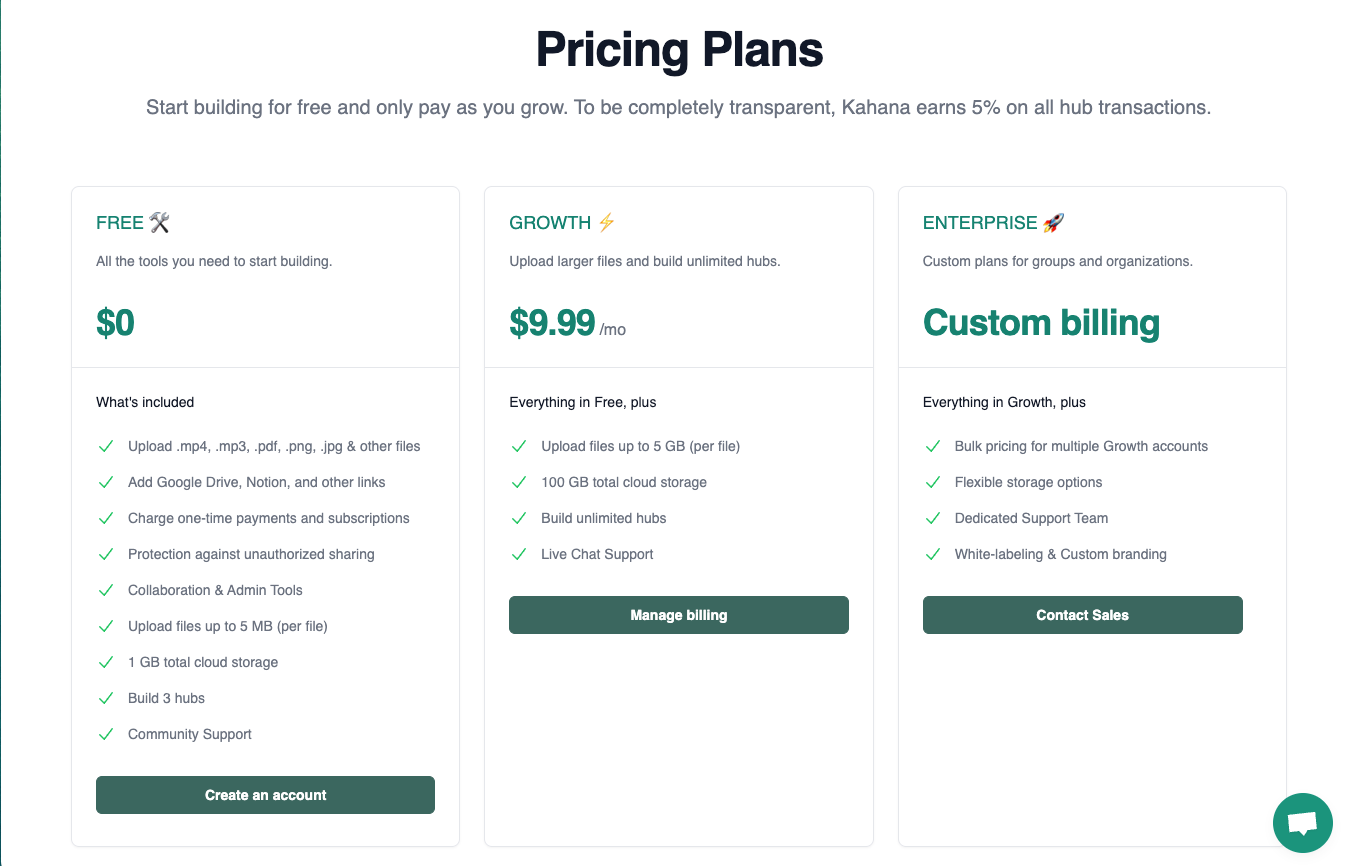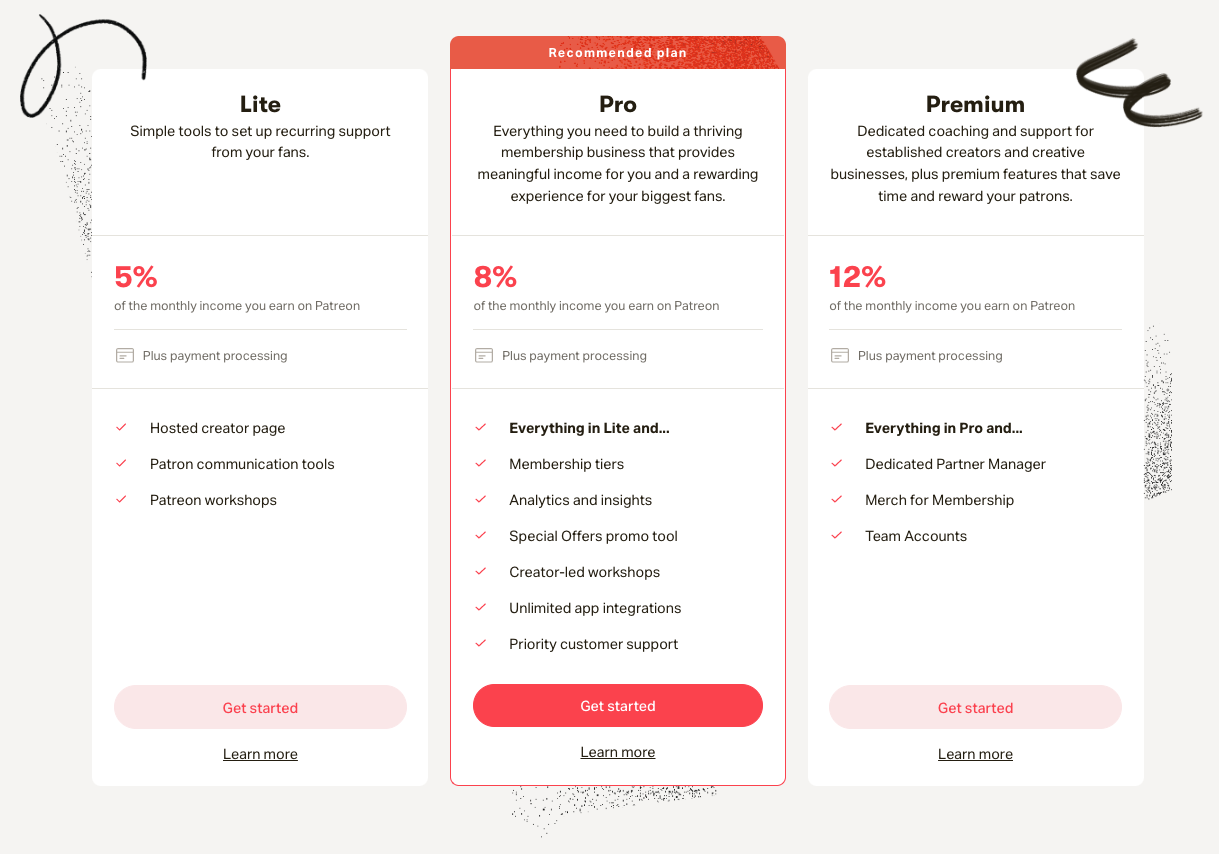Kahana vs. Patreon: What are the Differences?

Are you a content creator looking for a platform to generate recurring subscription revenue? Patreon and Kahana are two popular options out there. While both platforms have similarities, they have distinct differences that may impact which one is the best fit for your needs.
In this blog post, we'll compare and contrast Patreon and Kahana, so you can make an informed decision on which platform is right for you. Whether you're looking for a collaborative platform, flexibility in curating content, or enhanced security for your digital products, we'll dive into the key features and benefits of both platforms. So, let's explore the differences between Kahana and Patreon, and help you find the best fit for your content creation needs.
What is Patreon?
Patreon is a platform that enables content creators to generate recurring subscription revenue from their audience. It operates as a paywall platform, allowing creators to create exclusive content behind the paywall that their audience can access by becoming a patron and paying a monthly subscription fee.
Patreon is not a collaborative platform and does not offer tools to help creators co-create and collaborate with others. Patreon also offers features such as tiered memberships, merchandise sales, exclusive access to live events, and community features to incentivize and reward their patrons for their support.
What is Kahana?
Kahana is a platform designed to help creators generate revenue by creating and selling access to hubs of content. It is a collaborative platform that allows creators to co-create and collaborate with others. Kahana also offers flexibility in curating content, as creators can directly gather and organize their best information and content from different locations and transform it into an income stream.
How does Patreon work?
Patreon is a membership platform that allows creators to earn a living through their work by connecting with their fans and supporters. Here's how it works:
- Creators sign up for Patreon and set up a page where they can showcase their work and describe what kind of content they produce.
- Supporters can then browse through the different creator pages and choose which ones they would like to support by pledging a certain amount of money each month.
- In exchange for their support, creators offer their supporters different benefits or rewards. These can include early access to content, exclusive content, access to a private community, or personalized interactions with the creator.
- Patreon collects the pledges from supporters and takes a small fee (5-12%, depending on the plan). The rest of the money is then transferred to the creator's account.
Overall, Patreon provides a way for creators to build a sustainable income stream and connect with their most dedicated fans and supporters.
How does Kahana work?
Kahana is a platform that makes it easy for creators to monetize their digital content in a user-friendly way. Here's a brief overview of how it operates:
- Sign up and create an account on Kahana. Once you're registered, you can immediately start creating monetized hubs.
- Organize your content by either curating existing content or creating new content directly on Kahana hubs. You can incorporate various types of media such as text, images, videos, and more.
- Utilize Stripe to establish payment processing on Kahana, allowing you to accept credit card payments from your subscribers.
- Monetize your content by charging for access to your hubs. You can establish a hub, which is a collection of content that you can curate and set a price for. You can provide one-time payment or recurring payment plans.
- Collaborate with other creators to create a hub, share content, and split revenue. Kahana is designed to be a collaborative platform.
- Manage your subscribers by taking advantage of Kahana's various features, which include tracking growth, viewing details, and managing payments.
How does Kahana compare to Patreon?
Patreon and Kahana both help creators generate recurring revenue, but there are important differences between the two.
Collaboration
Firstly, Kahana is a collaborative platform where creators can co-create and collaborate to create digital products, while Patreon is simply a paywall platform where creators have to figure out how to create digital products behind the paywall themselves.
Flexibility
Based on its structure, Patreon requires that creators use tiers, where tiers are different levels of support that a patron can choose to contribute to a creator on the Patreon platform. Each tier usually offers different rewards and benefits for the patron, such as early access to content, exclusive content, personalized messages, and other perks.
For example, a creator may offer different tiers such as:
- Tier 1: A monthly contribution of $5, which includes access to exclusive blog posts and a thank you message.
- Tier 2: A monthly contribution of $10, which includes access to exclusive videos and a personalized thank you message.
- Tier 3: A monthly contribution of $25, which includes all the benefits of Tier 1 and 2, plus a monthly Q&A session with the creator.
The creator can customize the rewards for each tier and set the monthly contribution amount based on their goals and the value they provide to their patrons. Patrons can choose which tier they want to support, depending on their budget and the rewards they are interested in.
While tiers can work in some cases, it takes a lot of time and energy to properly construct them so that they are cohesive and segmented in value. Pricing the tiers accurately can also prove difficult. Sometimes a tiered approach simply doesn't make sense for a creator.
Kahana, on the other hand, allows you to create any amount of hubs and price them all independently. Instead of a tiered structure, there are no limitations to the types of business models a creator can deploy with Kahana. You can have 10 hubs for $10 each, a honeycomb structure with 1 central hub at $100, and adjacent hubs at $20 - the possibilities are endless.
“The flexibility is a huge differentiator in that you can just have monetized hubs and put them anywhere as opposed to Patreon, which is a whole thing.” - Mason Dodd (The Fantasy Flock Network)
What are the differences between Kahana and Patreon?
Patreon and Kahana are both membership-based platforms that allow creators to monetize their content, but there are several key differences between the two:
- Pricing: Patreon offers a tiered pricing system, where creators can offer different levels of access to their content for different price points. Kahana, on the other hand, allows creators to charge for access to specific hubs or collections of content at a set price.
- Collaborative Features: While both platforms offer collaborative features that allow creators to work together and split revenue, Kahana is specifically designed to be a collaborative platform where creators can easily work together to create content and monetize it collectively.
- Payment Processing: Patreon uses its own payment processing system, while Kahana uses Stripe to process payments from subscribers.
- Content Creation: While both platforms allow creators to create and share different types of digital content, Kahana offers unique content creation tools and features, such as the ability to create multimedia hubs directly on the platform.
Why do people choose Kahana over Patreon?
There are several reasons why creators may choose Kahana over Patreon:
- Collaborative Features: Kahana is specifically designed to be a collaborative platform where creators can easily work together to create content and monetize it collectively. This can be particularly attractive to creators who want to collaborate with others in their field or niche.
- Monetization Flexibility: Kahana's pricing model allows creators to charge for access to specific hubs or collections of content at a variable price they control, which can give creators more power over how they monetize their content.
- User-Friendly Interface: Kahana's user interface is designed to be user-friendly, making it easy for creators to create and manage their content, and for subscribers to access and pay for content.
Kahana vs. Patreon pricing plans
Last but not least, let’s talk numbers.
Kahana Pricing
Signing up for Kahana is completely free, and there's no need to pay any upfront fees or provide payment information, even if you choose the free plan. It's worth noting that if you earn revenue from monetized hubs, Kahana will take a 5% commission from your earnings (excluding Stripe fees).
Kahana's free tier is designed to help users get started on the platform. With this tier, you can create up to two hubs and invite an unlimited number of collaborators. You'll also be able to set up payment processing to monetize your content. However, the free tier has certain limitations, such as storage restrictions.
If you require more advanced features, unlimited hubs, or higher limits, you can upgrade to one of Kahana's paid plans.
For information, check out Kahana's pricing page.

Patreon Pricing
Patreon takes a 5-12% commission on each pledge depending on the creator's membership level, and there may be additional processing fees depending on the payment method used by subscribers.
For more information, visit Patreon's pricing page.

Sign up for FREE
You can use Kahana for free indefinitely without incurring any charges, even if you choose to remain on the free plan and do not gain any subscribers for your hub.
Kahana Explore page
The Kahana Explore page showcases a curated selection of exceptional hubs created using the Kahana platform. The page aims to demonstrate the quality and diversity of content that can be produced on Kahana, as well as help users discover new and captivating hubs to explore.
The Explore page encompasses hubs on a broad range of topics, spanning from business and marketing to health and wellness, and beyond. Users can browse the selection, preview the content, and subscribe to the hubs that pique their interest. Additionally, creators can suggest their own hubs for consideration to be included on the page.
Quick answers
If you cannot find the answer you're looking for or if the information appears to be outdated, please inform us so we can assist you better.
- 🐦 Tweet us directly @KahanaHQ (fastest!)
- 💬 Leave a comment below
- 🗣️ Visit our Help Center

Talk with a Kahana representative
Fill out your information and a Kahana team representative will reach out to you. Have a simple question? Search our library of articles


